For a beginner, you don’t want to be the one that is slowing down the round for everyone in your group.
Not knowing what to do (or where to stand) hole-by-hole can sometimes be a little embarrassing, but after you read this article you won’t ever have to worry about being “the slow one.”
Key Takeaways
The typical golf pace of play for beginners is around 5-5.5 hours. Beginner golfers don’t usually know the intricacies of what it takes to speed up the pace of a round of golf, but with a little experience, he/she can learn the flow of playing with a good golf pace of play.
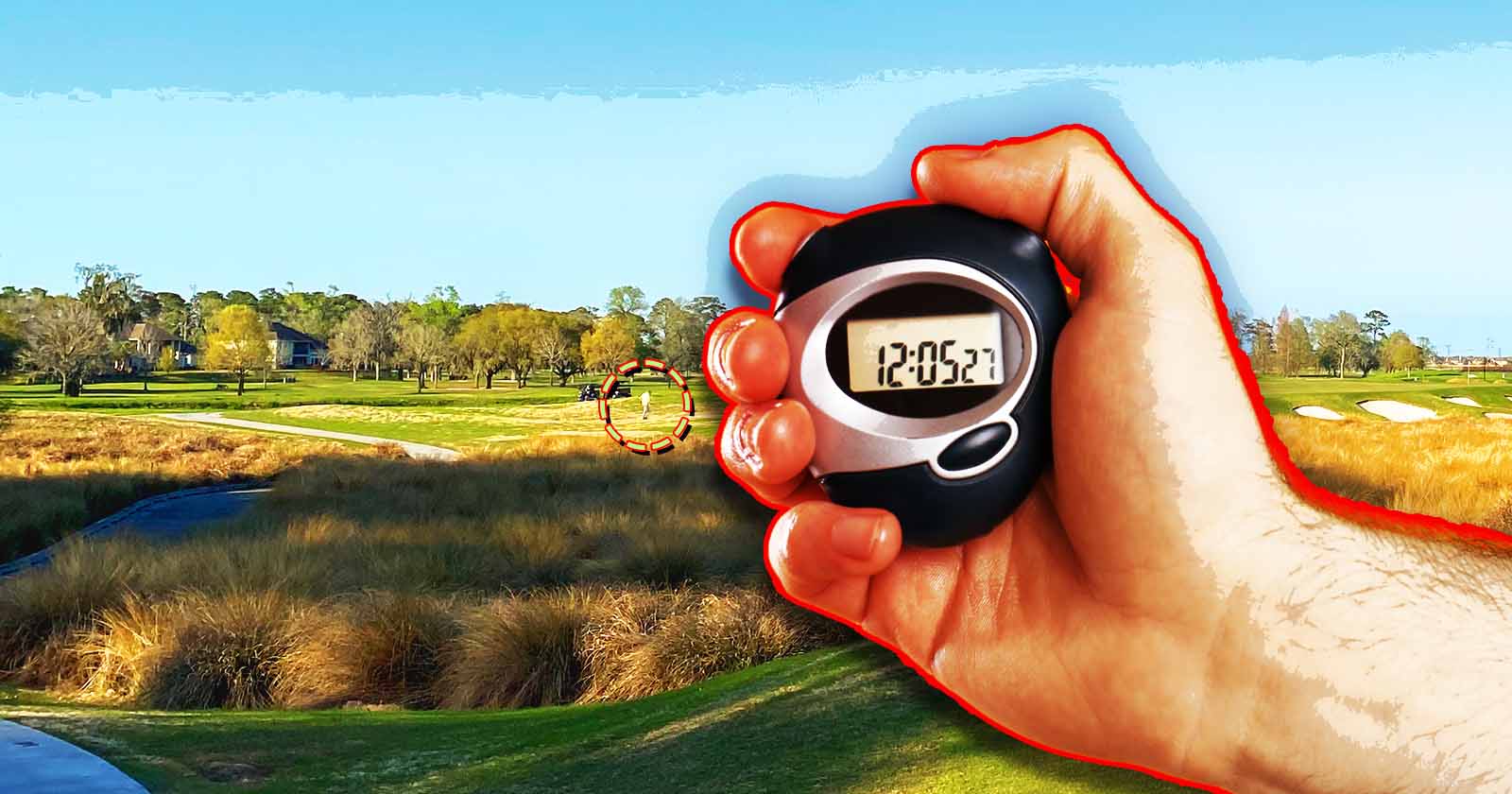
Background on what pace of play means in golf
In the game of golf, the pace of play refers to the speed at which a round of golf is completed. Golfers must maintain a good pace of play to ensure smooth flow and reduce wait times on the golf course.
For beginner golfers, understanding golf etiquette and practicing the proper pace of play is essential for enjoying the game while keeping everyone in the group happy.
When you are getting ready to play a round of golf, it’s important to be mindful of the time you spend on each shot.
Having a quick pre-shot routine and being ready to play when it’s your turn can significantly improve the overall pace (and not piss off your playing partners).
Another factor that affects the pace of play is how efficiently golfers move around the golf course.
To maintain a good speed, have a solid grasp on which clubs to use for all the yardage ranges. This will minimize delays between shots and help maintain a solid pace.
Factors that influence pace of play
Course layout and difficulty
One of the main factors affecting the pace of play is the course layout and difficulty.
A more challenging course with many hazards, tight fairways, and undulating greens may take longer to navigate, especially for beginners. The course design can also impact the flow of play, including the distance between holes and the placement of tees and greens.
We should all aim for a steady pace, allowing for some extra time on particularly challenging holes.
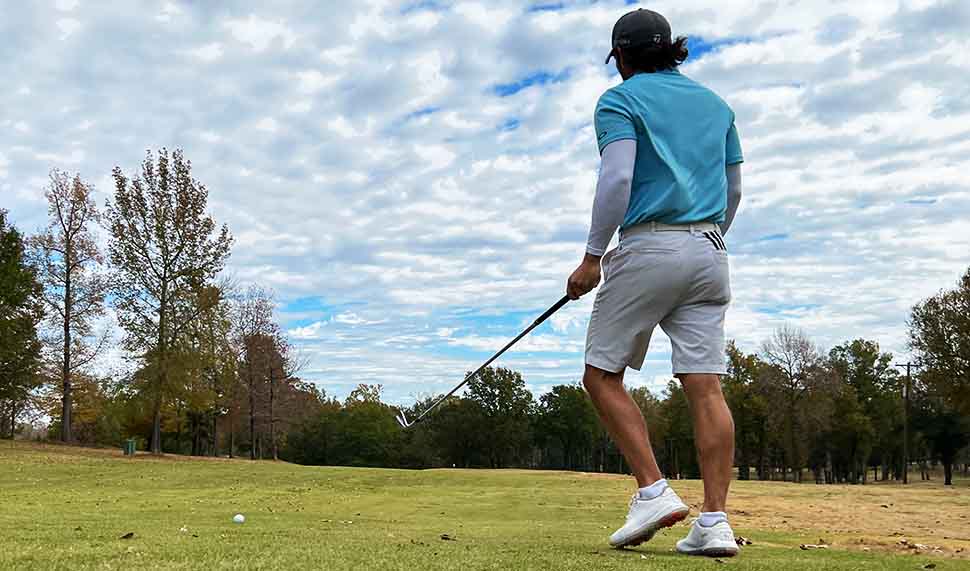
Player experience level
Golfers of different experience levels will have different paces of play.
Beginner golfers typically take longer to hit their shots because of practice swings and too much thinking.
To play good golf, eventually, you just have to let go and let the preparation take over.
More experienced golfers don’t take practice swings and tend to just stand behind the ball to line up the shot and go from there.
If you are a beginner golfer, try to focus on improving your pace by developing a pre-shot routine that doesn’t involve taking full practice swings, and instead, focus on visualizing the shot when standing behind the ball.
Group size
The size of a group significantly impacts the pace of play.
Larger groups tend to take longer to complete a round, as each golfer requires time to hit their shots and navigate the course.
Sprinkle in a game of Wolf and/or more gambling. This will prolong the overall pace of play for beginners.
Golf is always play slower when there is money on the line 😉 💵
Walking vs. golf carts
Whether golfers choose to walk or use golf carts also has an effect on pace.
Walking allows for a slower, more deliberate pace, while using a golf cart may speed up play as players can quickly move to each shot.
I personally prefer walking when I play because it slows things down and helps me think about each shot while I walk to the ball.
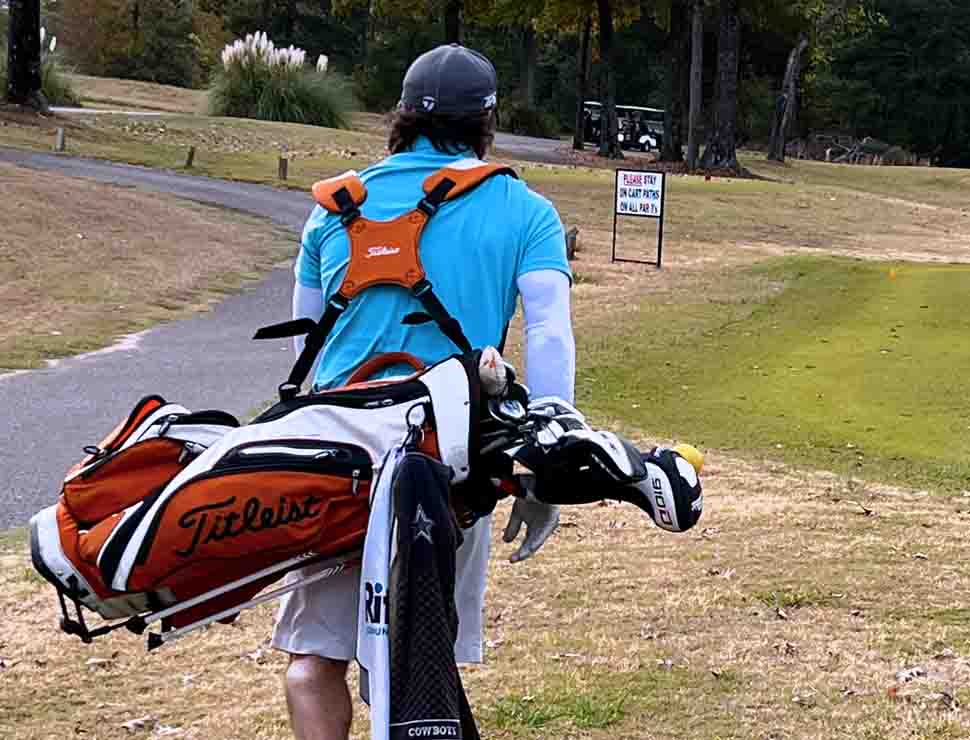
If you mainly play on weekends, walking is usually out of the question because one person walking in a group of cart-riders just doesn’t mesh well for a nice pace of play.
Course management
Effective course management plays a vital role in maintaining a good pace of play. Try to be mindful of where the hazards are off the tee.
Play smarter shots that give you the best chance at hitting the green in regulation.
Naturally, the pace of play will slow down towards the end of rounds because people are going to be grinding their scores and locking in to maybe even try and break 100 for the first time ever.
Typical pace of play for new/high handicap golfers
As a new or high-handicap golfer, it is important to understand what the standard pace of play is and how it affects the overall round.
Many golf courses often have recommended guidelines for the pace of play, which can help ensure that everyone enjoys the game (at a decent pace).
One of the key factors affecting the pace of play is our skill level.
As beginners or high handicap golfers, most are likely to take more shots and time to complete a round of golf compared to lower handicap golfers. An average golfer with a 15-handicap is expected to take around 90 shots over 18 holes.
We should also consider the time it takes for each shot.
On the PGA Tour, the slowest 10% of players take an average of 45 seconds or more for each stroke.
While PGA Tour players have a different level of skill and pressure (shocker), we can still use this as a reference point to manage our pace. A good rule of thumb is to aim for 20 to 30 seconds per shot.
It may help to implement some strategies that can help us maintain a reasonable pace of play.
For instance:
- Playing “ready golf:” This is when the group decides to throw out the traditional way of playing golf when the furthest person away from the hole hits first.
- Also, ready golf is when there’s no order off the tee. Whoever is ready to hit just goes.
- Planning and preparing for our next shot while others are taking their shots.
- Keeping up with the group ahead to reduce gaps in the course.
- Limiting the time spent on looking for lost balls.
Tips for beginners to keep up pace
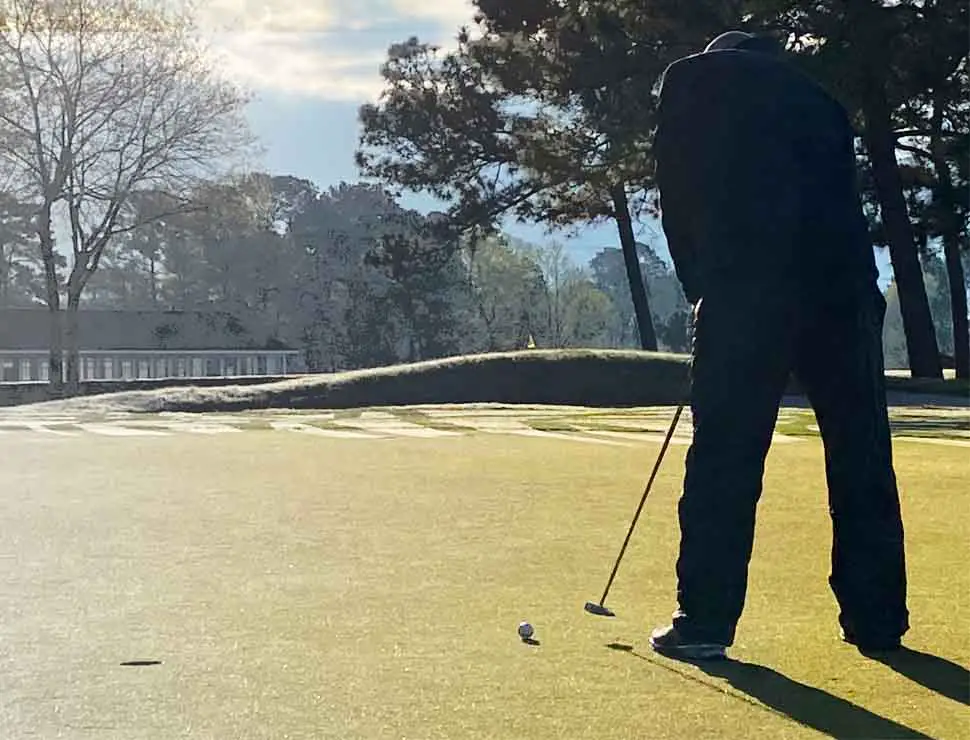
Ready golf: Be ready when it’s your turn
For beginners to boost their pace of play, it’s important to be ready when your number is called.
This means planning out your shot while others are hitting, so when it’s your turn to play, you’re good to go.
Don’t waste energy: Limit practice swings
While practice swings can help develop consistency in our shots, taking too many can slow down the pace for everyone.
To maintain the pace, we should try to limit our practice swings to one at the absolute most for every shot.
Tip: Spending plenty of time on the driving range before the round helps give you a feel for how you will shape your shots so that you don’t feel like you are guessing how the ball will fly before every shot.
Know your yardages: Don’t overanalyze club choice
If you are new to golf, knowing your yardage simply takes time.
However, it is important to know these numbers as soon as you can.
Knowing your yardages will only boost your confidence going into each shot and make room for your brain to think about execution, not how far you think you might hit it.
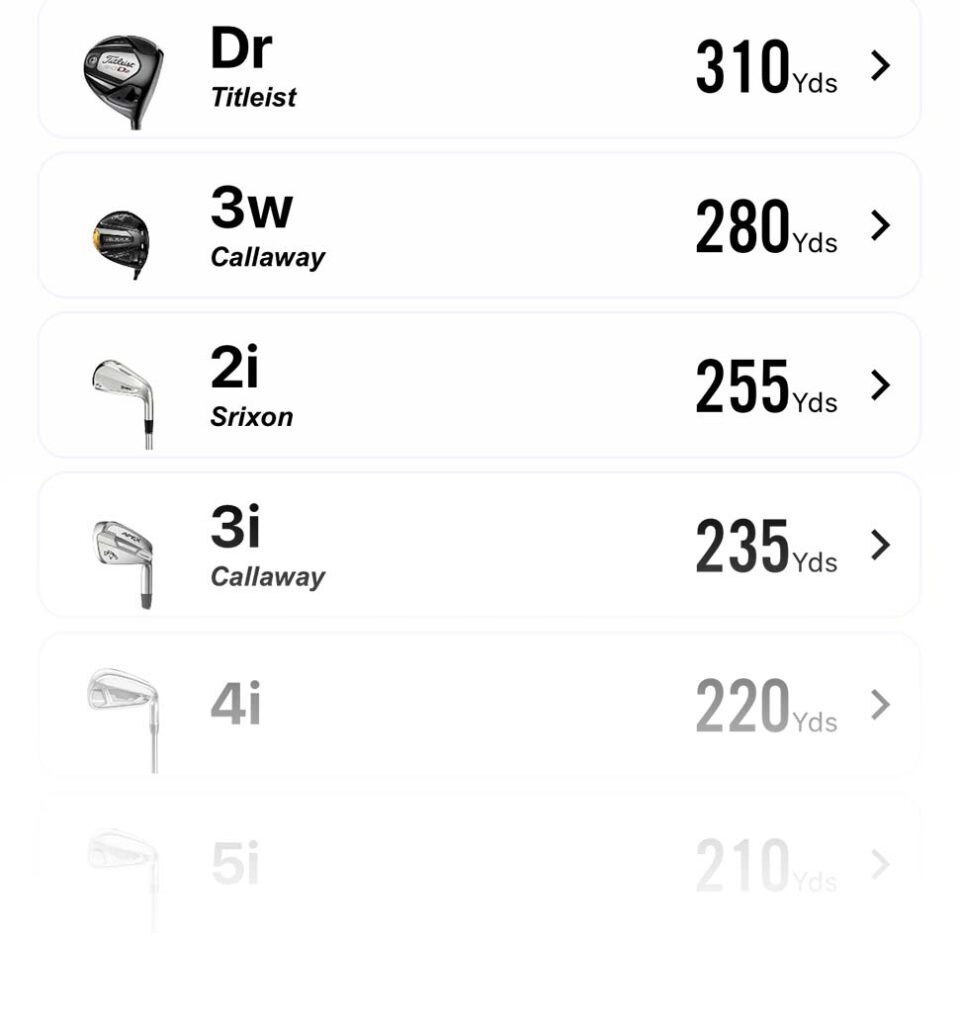
Keep pace: Stay close to the group ahead
If you are playing on a weekend (like most do) and the course is slammed, try and at least be half a hole behind the group in front of you on a consistent basis.
This means that if the group in front of you is putting out on a par 5 and everyone in your group has just walked on the tee box to tee off, then you are too far behind.
Try and be ready to hit your approach shots to the green as the group in front of you finishes the hole.
Quickie: Consider only playing 9 holes
This method is my personal favorite for learning how to get good at golf.
Especially if you are playing after work on a weekday.
Most beginners probably don’t know how long it takes to play 9 holes of golf, but playing on weekdays is your best bet to get in those quick rounds as opposed too how long it takes to play 18 holes of golf on weekends.
Playing 9 holes gets rid of the thing that cripples golfers the most… WORRYING ABOUT YOUR SCORE!
By only playing 9 holes, it’s easier to work on mechanics and course management rather than worrying about whether you will break 100 after shooting a 52 on the front nine.
Assuming daylight savings time, try and give yourself 1 hour on the range to get loose before heading over to play 9 holes of golf.
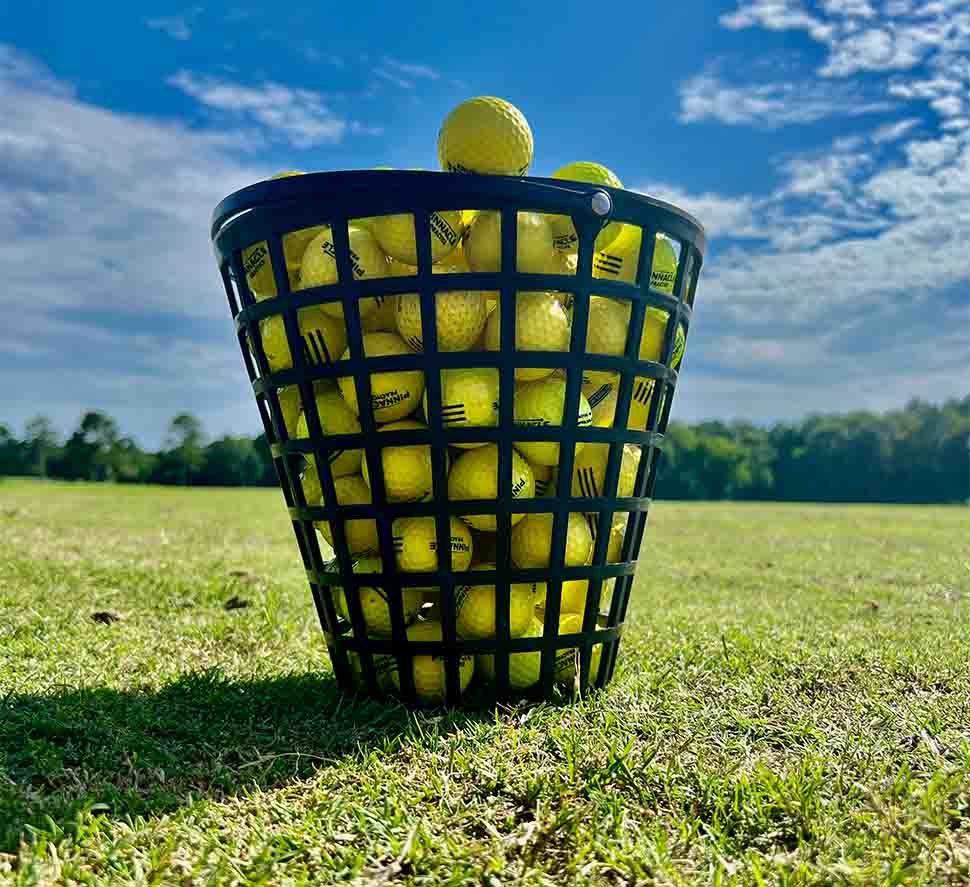
Golf etiquette around pace of play
Practicing good golf etiquette increases your chances of being invited back to play with a group you’ve only played with for a single time.
Golf etiquette can be broken down into 3 phases of each hole:
Let’s start on the tee box
One of the biggest “cardinal sins” in golf is teeing off before someone who made a birdie (or eagle) on the previous hole.
If everyone makes the same score, it’s usually fine to tee off whenever you want, but more competitive groups will want to play by the standard way of teeing off in order of best-to-worst scores on the previous hole.
The last thing to note here is yelling “FORE!” if you hit and the ball is heading right at someone’s face on the hole parallel to the one you are currently playing.
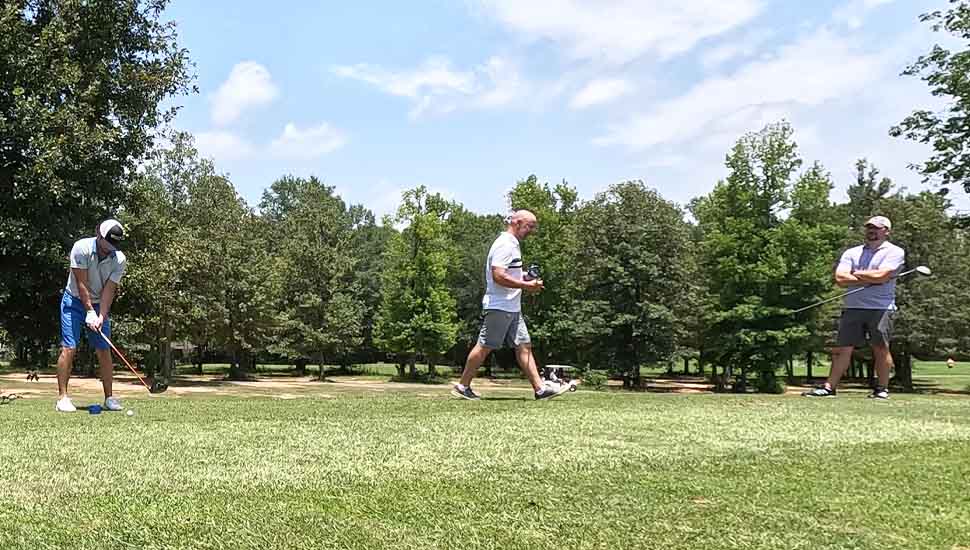
In the fairway
Playing from the fairway (or rough) to the green begins the process of being “away” from the hole.
It’s simple to see who is the furthest from the hole and move down the line until the golfer nearest to the hole is hitting last into the green.
Okay, I saved the most important part of golf etiquette for last… THE GREENS.
On the green
If you have yet to hear this, I’ll go ahead and say it now.
PUTTING is the hardest thing to be good at in golf.
Your focus always needs to be dialed in when trying to putt, and the worst thing that can happen when trying to focus on making the putt is someone else in the group standing right behind you.
Golf etiquette checklist
Here’s a quick checklist for great golf etiquette on the greens:
- Always mark your ball with a coin (not a tee)
- When surveying your putt, make sure you don’t walk in anyone else’s line between their ball and the hole
- Don’t stand behind, or worse, on the same spot where you sometimes see a TV camera post up when they shoot pro golfers
- Don’t take multiple practice strokes
- If someone else in the group says your putt is “good,” then pick it up
The thing that sometimes slows down the pace of play the most is everyone in the group grinding out 2-3 footers.
Don’t be that group.
You’re good to go
Alrighty then, you are fully equipped to play some good golf now with all the knowledge you need to keep up a good pace of play.
If you are unsure about some things on the golf course, simply ask someone else in the group what the proper course of action is.
Overall just have fun out there.
